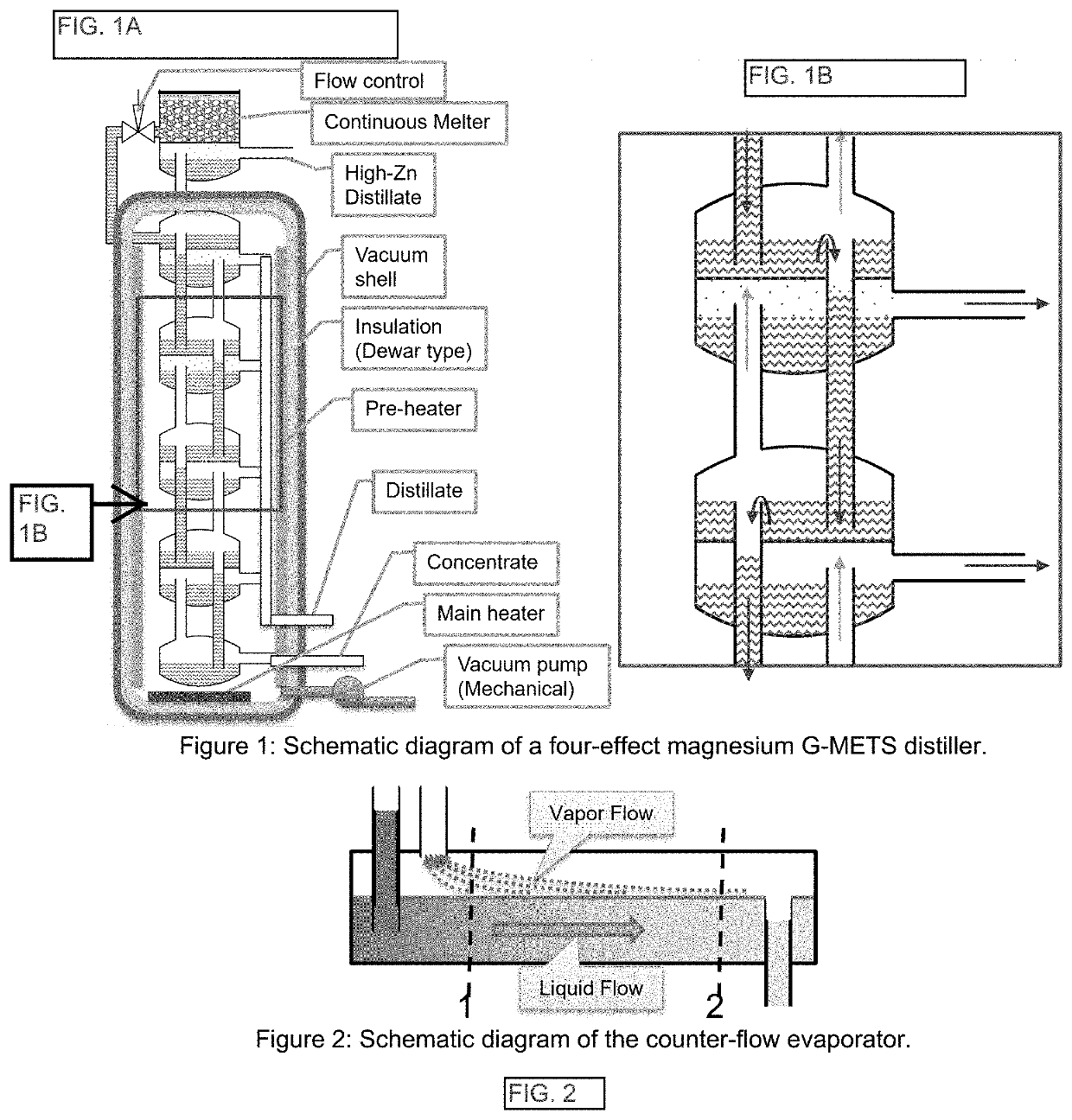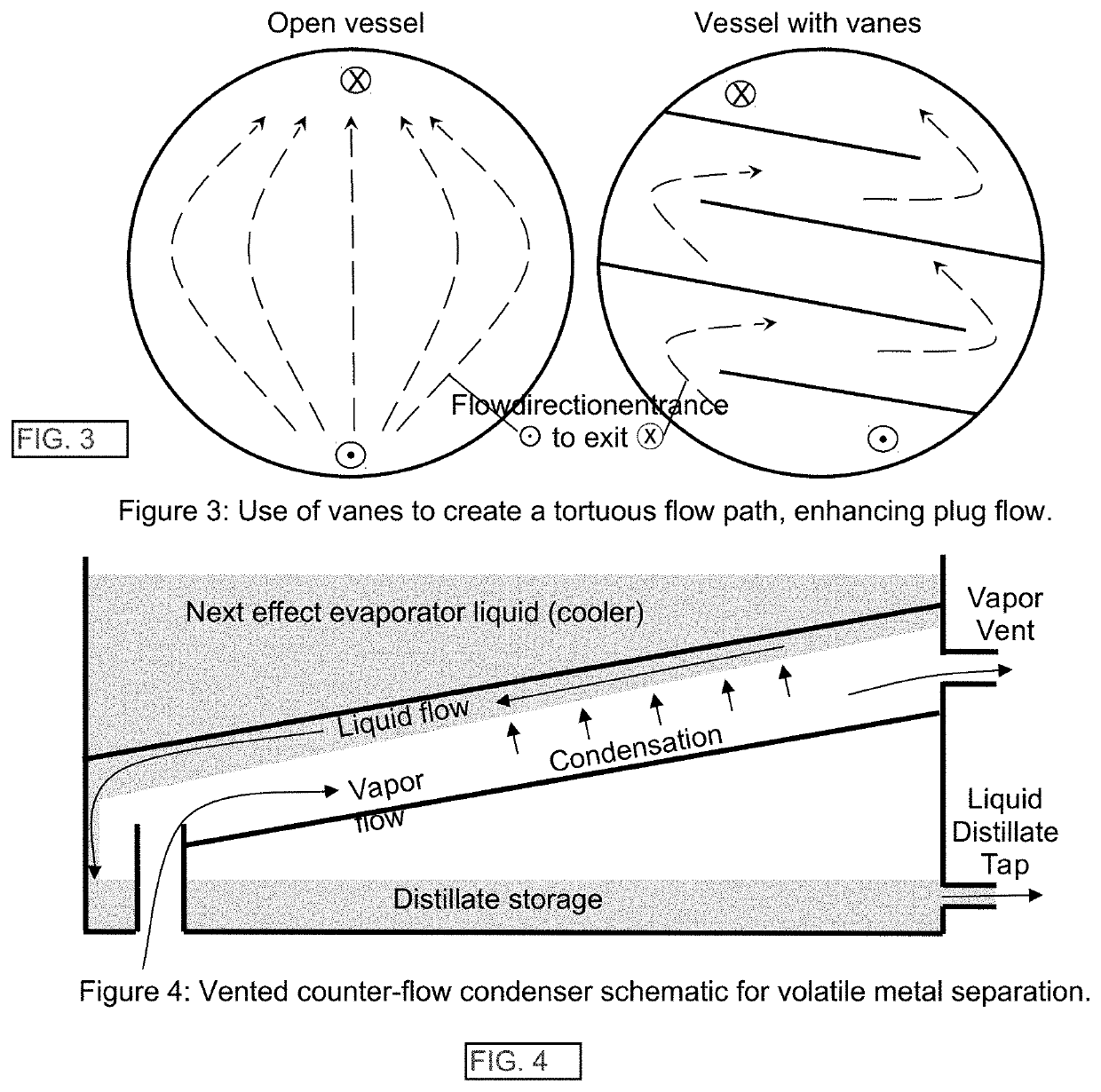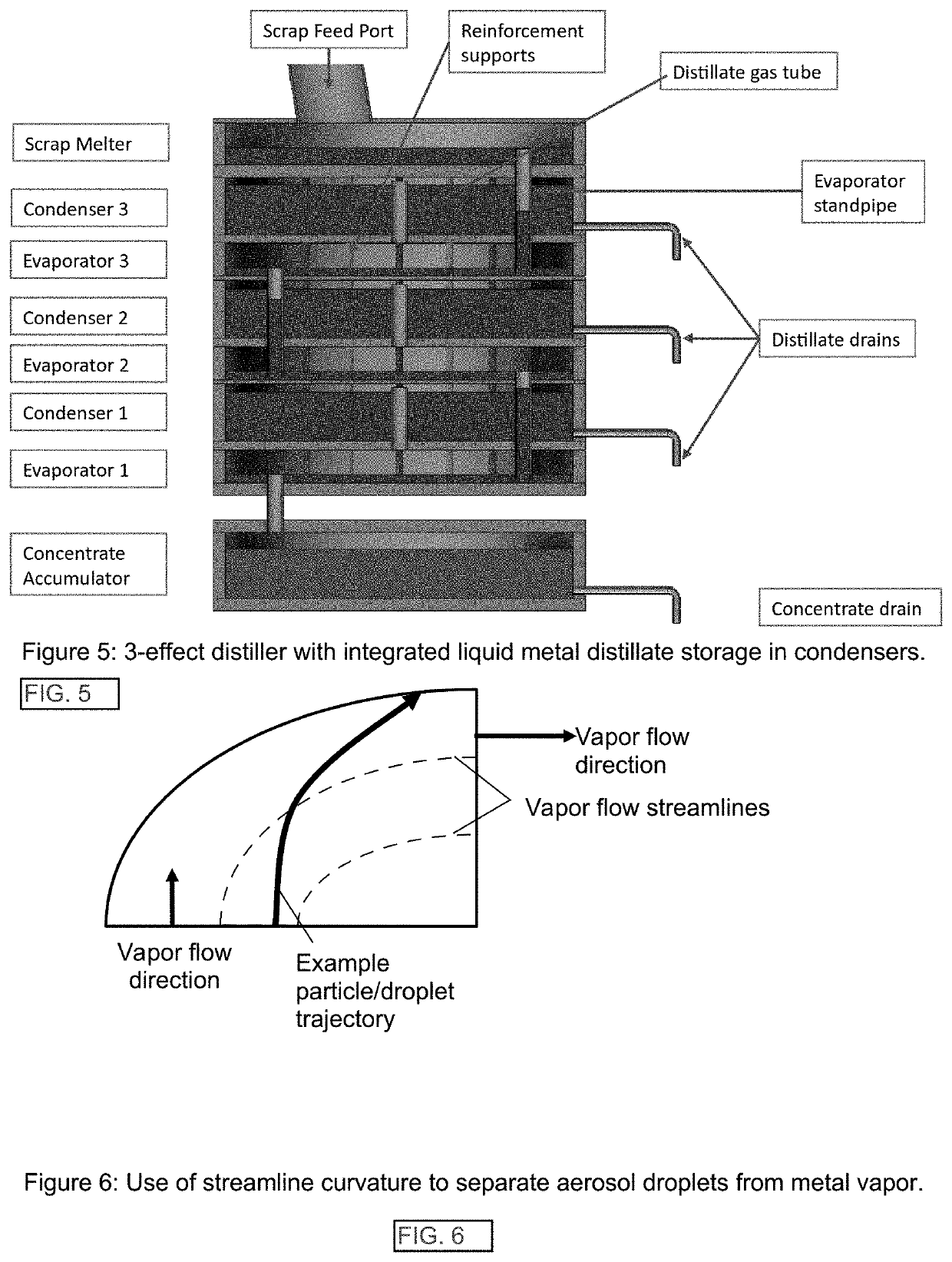Method and Apparatus for Efficient Metal Distillation and Related Primary Production Process
a technology of distillation process and primary production process, applied in the direction of evaporator regulation/control, separation process, multiple-effect evaporation, etc., can solve the problem of low energy efficiency
- Summary
- Abstract
- Description
- Claims
- Application Information
AI Technical Summary
Benefits of technology
Problems solved by technology
Method used
Image
Examples
example 5
[0137] In a two-effect 140 batch distiller similar to that of Example 3 (drawings shown in FIG. 13A, FIG. 13B, and FIG. 13C), the same synthetic scrap composition was placed in both evaporators 110, but this time with 4.3 kg in the bottom effect 140 and 2.6 kg in the top effect 140. This time the whole distiller was held at 750° C.±15° for two hours using side heaters in order to melt all of the magnesium before starting distillation. A small heater kept the top surface of the top effect 140 at 750° during this time to prevent freezing of a plug as happened in Example 2. After this, side and top heaters were shut off and the bottom temperature set point raised to 900°, though bottom heater power was limited to 2000 W. Metal evaporation in the evaporators 110 and condensation in the condensers 120 kept the bottom temperature at about 840°, below its set point due to the 2000 W power limitation, and the top temperature above 700°. Temperatures and heater power output records vs. time ...
example 6
[0140] FIG. 18 shows output of a simulation of a six-effect 140 magnesium distiller assuming perfectly mixed evaporators 110 and condensers 120. The influent scrap is 5 wt % Al 1% Zn balance Mg. It assumes negligible aerosol carry-over, i.e. nearly zero aluminum in distillate 106 streams, and different evaporator 110 and condenser 120 metal vapor 104 compositions, i.e. presence of an effective barrier preventing metal vapor 104 back-diffusion from condenser 120 to evaporator 110. Bottom evaporator 110 temperature is 950° C., and top condenser 120 outside temperature and top evaporator 110 influent magnesium are both at 800° C.
[0141]Zinc separation in this distiller is relatively poor: the bottom effect 140 distillate 106 D1 has 0.28 wt % Zn. Combining the bottom four effect 140 distillates gives 0.9 wt % Zn product, which is suitable for use in 1 wt % Zn alloys such as AZ91, AZ31, ZEK100 etc. The top two effect 140 distillates D5 and D6 average 2.1 wt % Zn, which is suitable for hig...
example 8
[0144] FIG. 20 shows output of a simulation of a three-effect 140 magnesium distiller assuming counter-flow evaporators 110 and condensers 120. The influent scrap is 5 wt % Al 1% Zn balance Mg. It assumes negligible aerosol carry-over, i.e. nearly zero aluminum in distillate 106 streams, and different evaporator 110 and condenser 120 metal vapor 104 compositions, i.e. presence of an effective barrier preventing metal vapor 104 back-diffusion from condenser 120 to evaporator 110. Bottom evaporator 110 temperature is 950° C., and top condenser 120 outside temperature and top evaporator 110 influent magnesium are both at 800° C.
[0145]Zinc separation is again quite good: blended distillate 106 from the bottom two condensers 120 D1+D2 is just 0.03 wt % Zn, suitable for any Mg alloy. The top condenser 120 distillate 106 is 0.7 wt % Zn, suitable for use in 1 wt % Zn alloys. Vented metal vapor 104 from condensers 120 produces a distillate 106 with 50 wt % Zn and 1% of the influent mass.
PUM
| Property | Measurement | Unit |
|---|---|---|
| pressure | aaaaa | aaaaa |
| distillate temperature | aaaaa | aaaaa |
| temperature | aaaaa | aaaaa |
Abstract
Description
Claims
Application Information
 Login to View More
Login to View More - R&D
- Intellectual Property
- Life Sciences
- Materials
- Tech Scout
- Unparalleled Data Quality
- Higher Quality Content
- 60% Fewer Hallucinations
Browse by: Latest US Patents, China's latest patents, Technical Efficacy Thesaurus, Application Domain, Technology Topic, Popular Technical Reports.
© 2025 PatSnap. All rights reserved.Legal|Privacy policy|Modern Slavery Act Transparency Statement|Sitemap|About US| Contact US: help@patsnap.com



